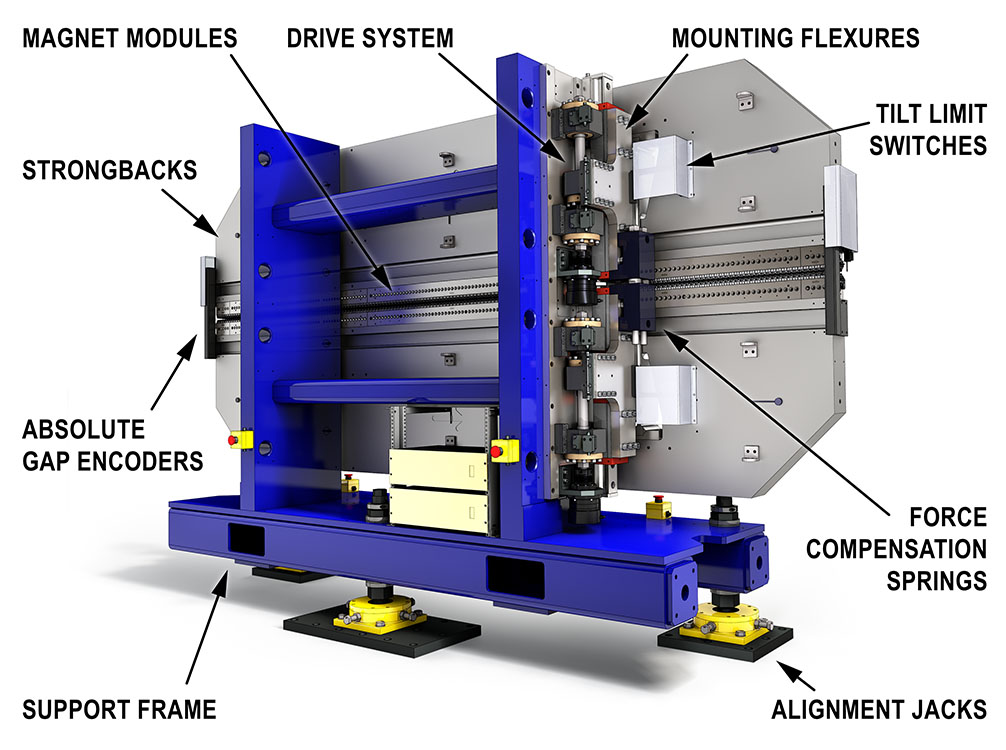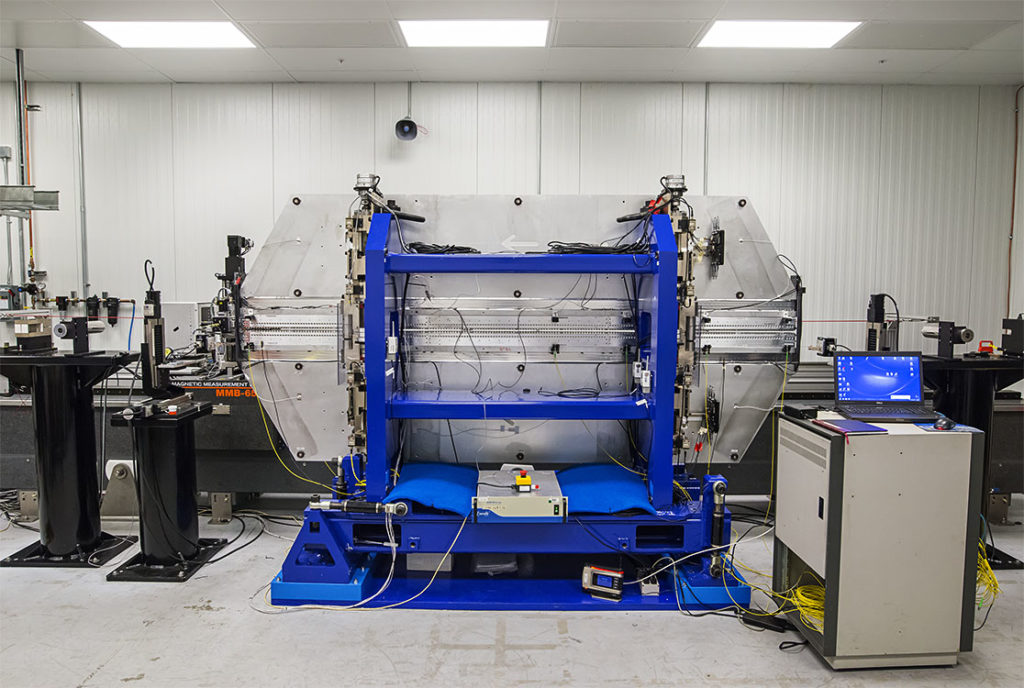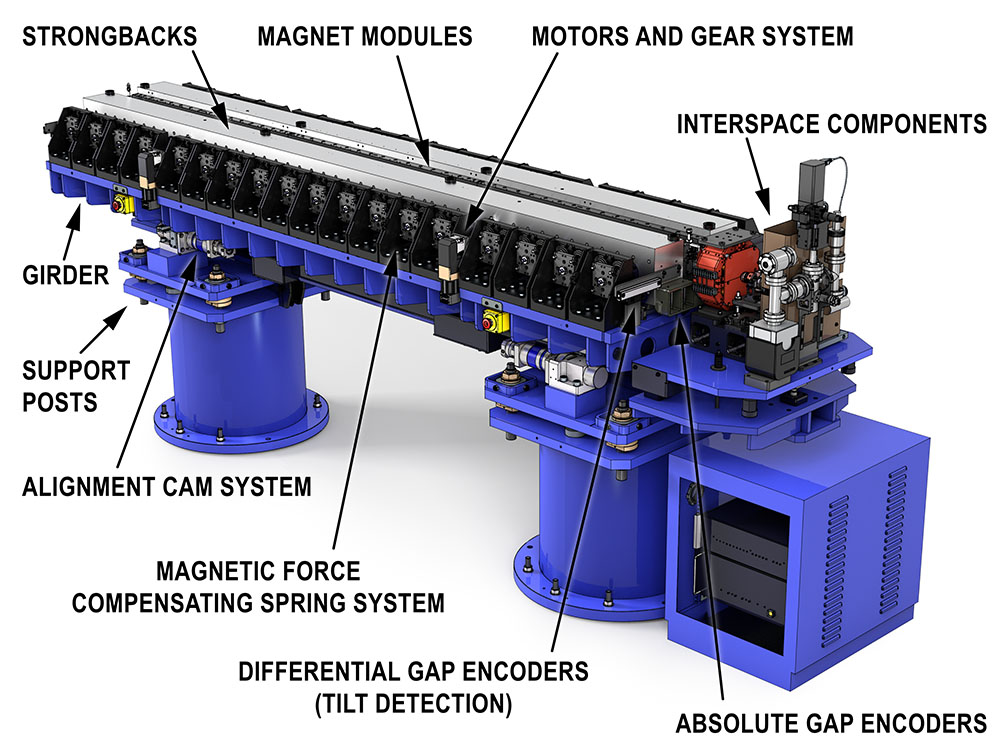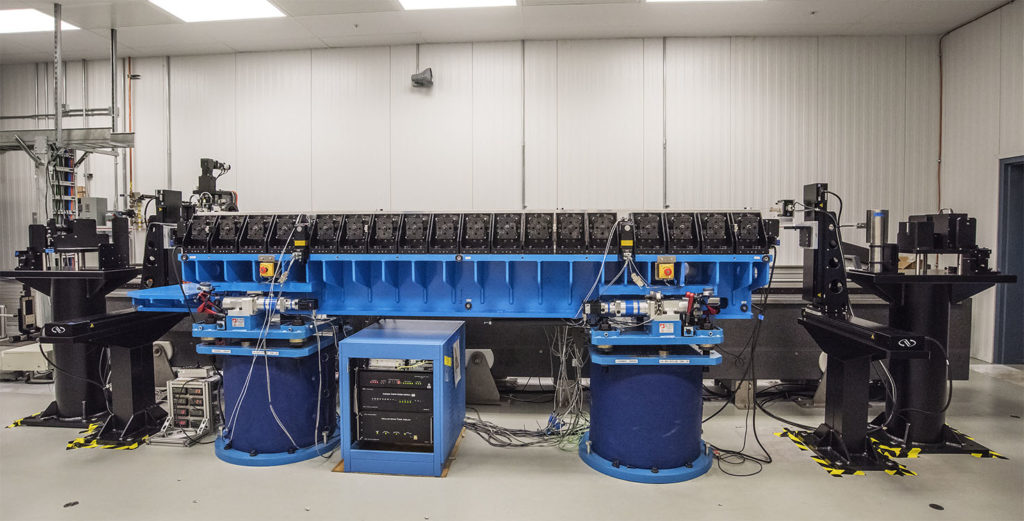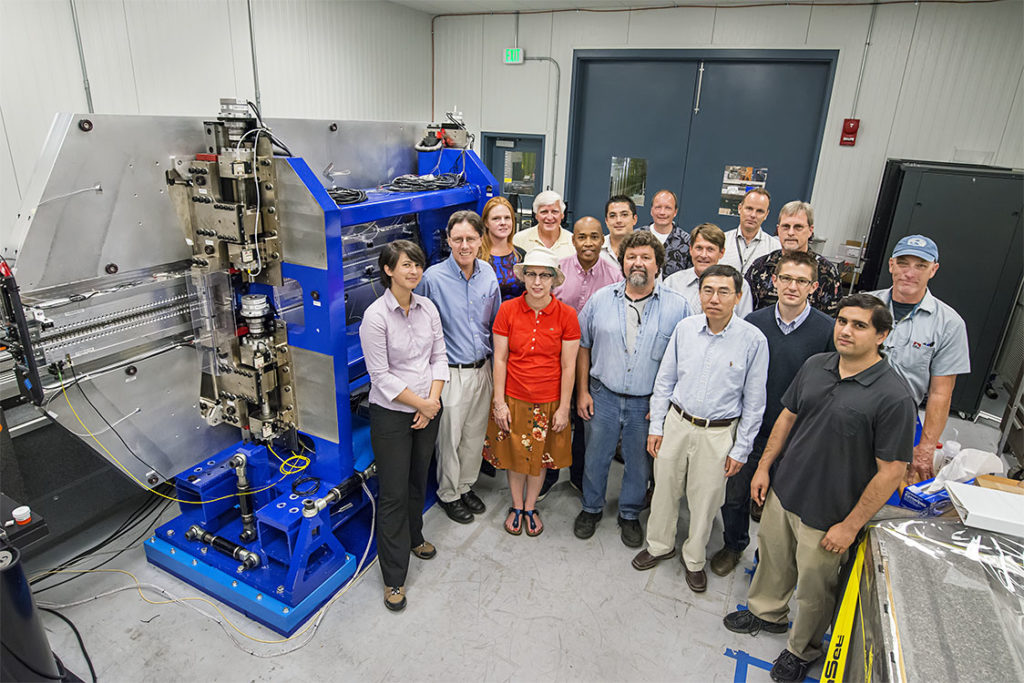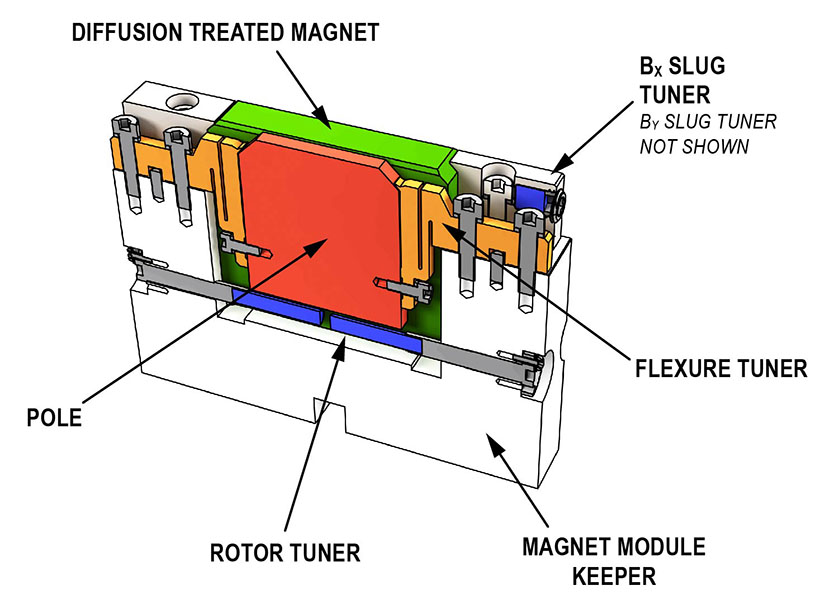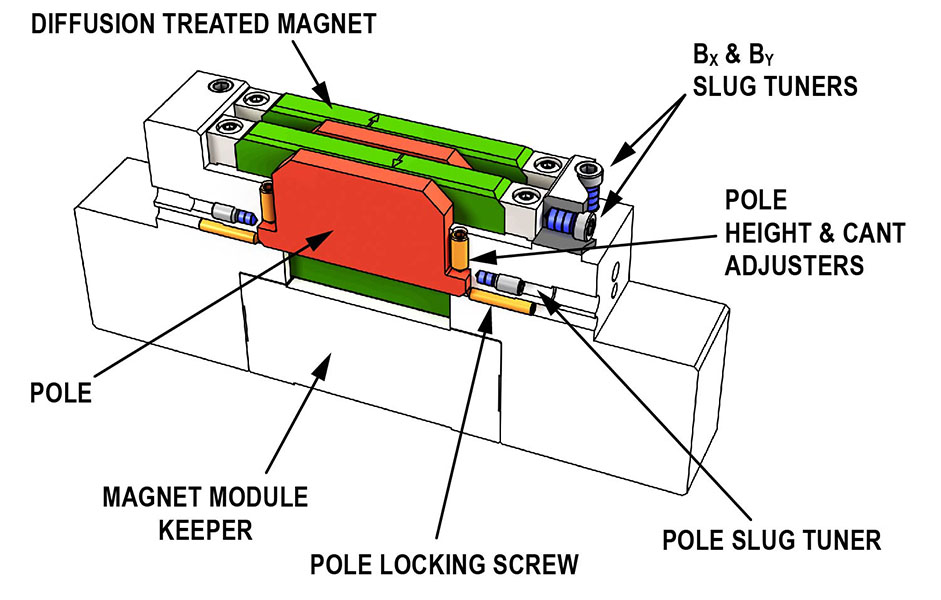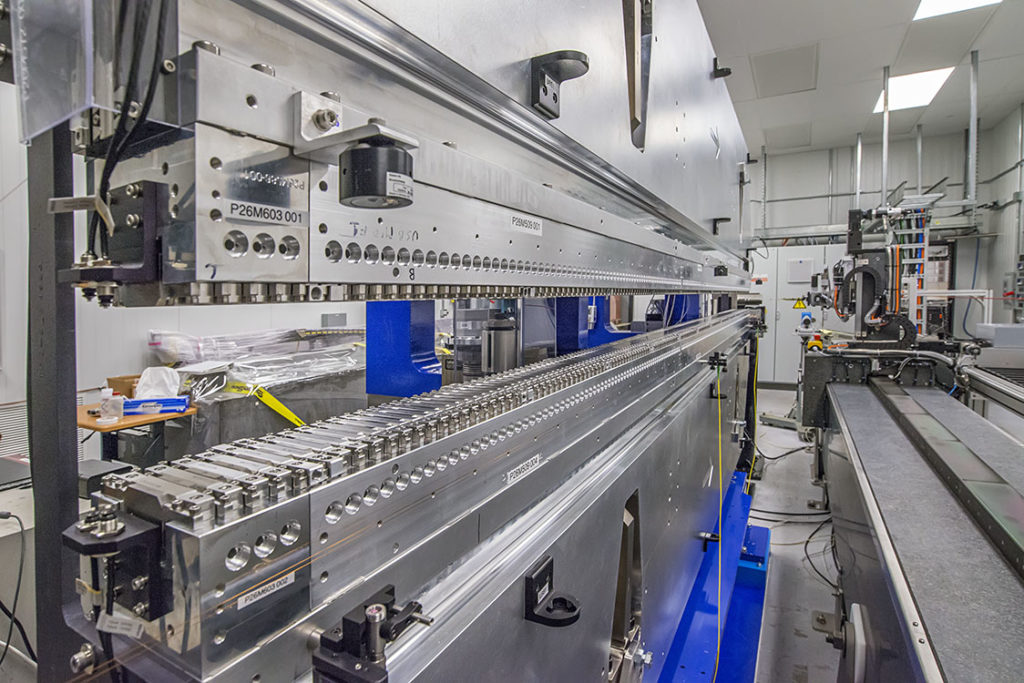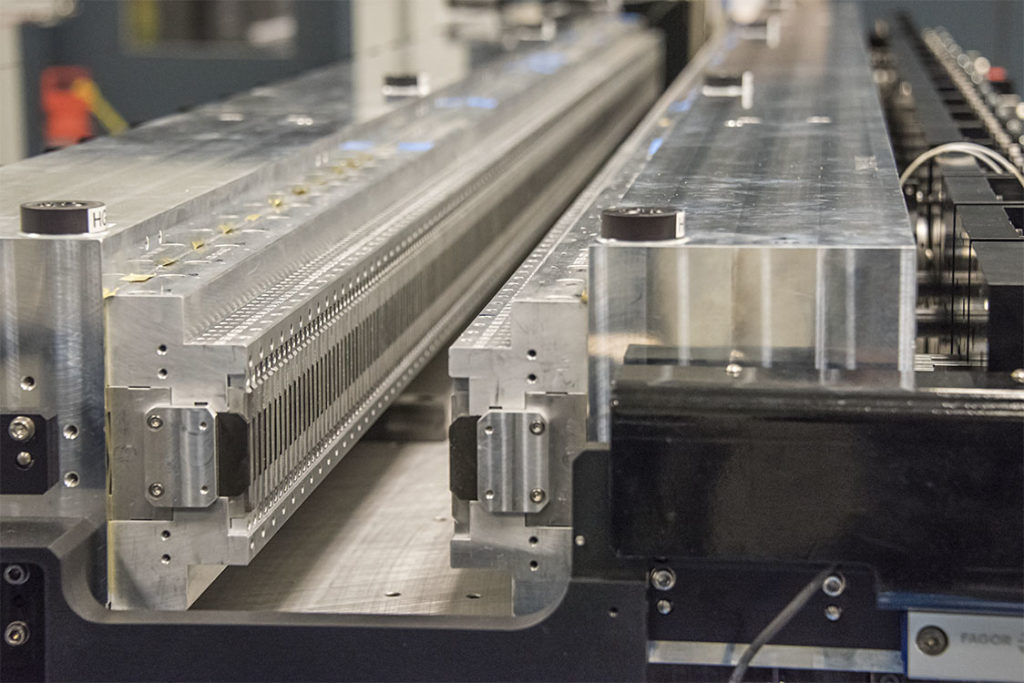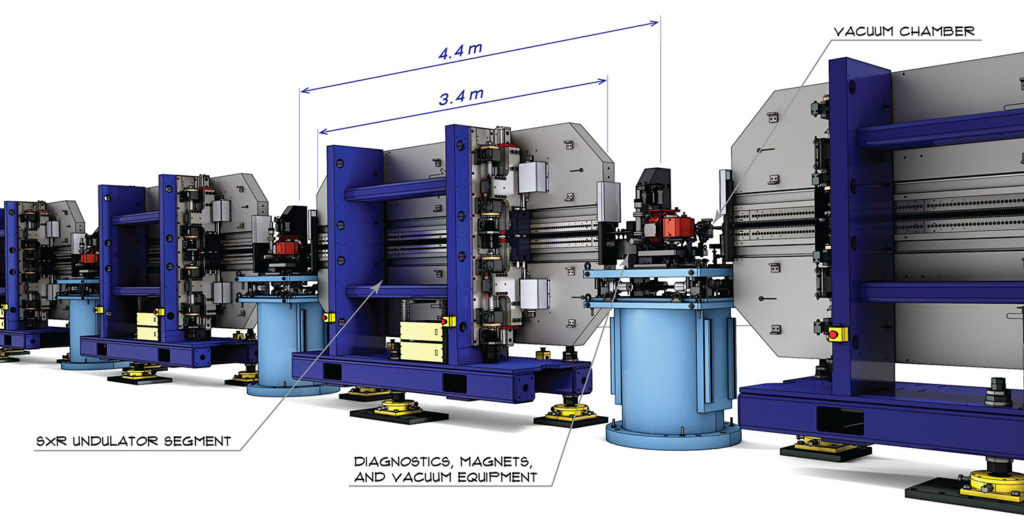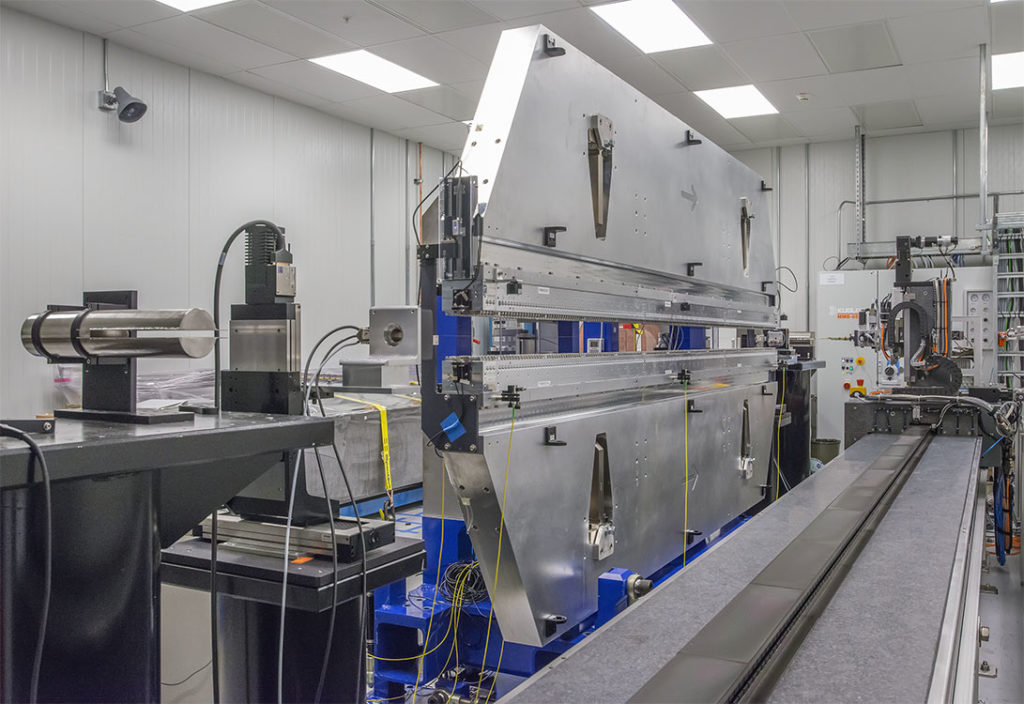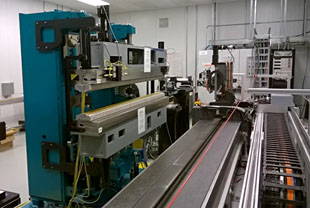An undulator is a periodic magnetic structure that serves as a critical component in synchrotron light sources and free electron lasers. Light, typically in the extreme ultraviolet to x-ray wavelengths, is produced when an electron beam passes through the periodic field. The wavelength is tunable by varying the magnetic field strength or the electron energy. Berkeley Lab’s Engineering Division has been at the forefront of undulator development since Klaus Halbach’s development of permanent magnet and hybrid (permanent magnet with high permeability poles) undulator structures, which was a key to the development of third and fourth generation light sources. In recent years, we have also been a leader in the development of NbSn3 superconducting undulators. The division designs and fabricates state-of-the art undulators for the Advanced Light Source. As one of the biggest construction projects we built approximately 60 undulators for LCLS-II, the world’s most powerful free electron laser at Stanford Linear Accelerator Center (SLAC).
